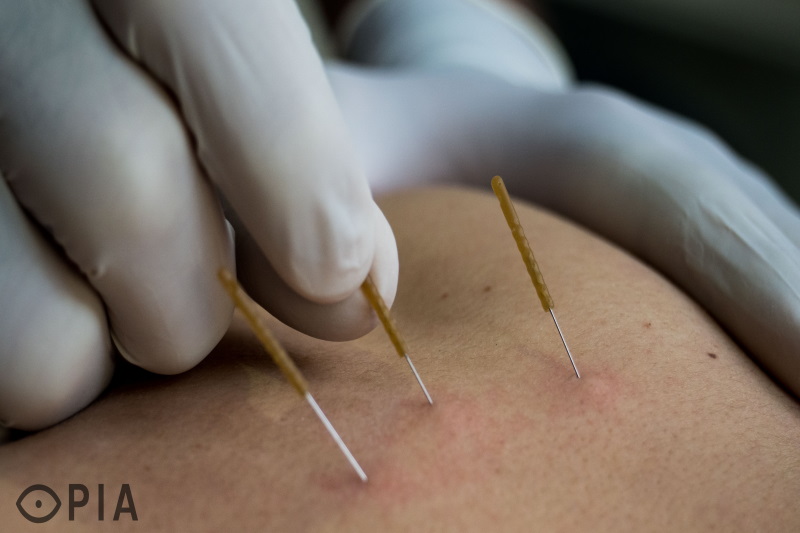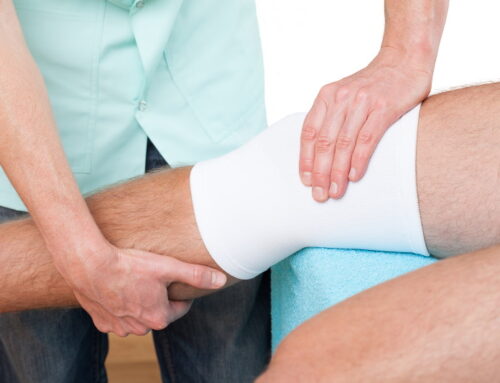Some of the terminology used in physiotherapy can seem a bit strange at first. Myofascial pain? What on earth is that? Do you have it? How would you know?
‘Fascia’ is a general term for the connective tissue that holds us together, and ‘Myo’ means muscle. Myofascial pain simply means that is pain coming from trigger points in the muscles, and the fascia that is interwoven over and around them. To give you a notion of how wide-reaching it is, about 85% of the pain humans experience is classified as ‘myofascial pain’!
Sore Spot
A trigger point is a sore spot; a very sensitive, tightened area of the muscle. They are annoying little knots that can cause pain; decreased muscle function and decreased flexibility.
These little nodules are found within a taut band of muscle, and they can cause all kinds of sensations – from pain to burning; tingling; weakness and decreased flexibility.
Sometimes a trigger point can have what is known as ‘referred pain’ – this means they not only have pain right where they are, but they can cause more pain in a completely different area of the body as well.
These trigger points are usually the result of an injury, or can be caused by long-term repetitive strain. Physical stress will aggravate them, but psychological stress will too, as the body tenses up.
An amazingly high percentage of most of the pain we suffer from comes from myofascial pain; it’s incredibly common and has a myriad of causes.
Causes of Trigger Points
There can be many reasons for the build-up of trigger points; from overuse of muscles to bad posture. When you come to Portobello Physiotherapy Clinic, we assess your daily activities and ergonomics (how you sit and move) as part of the evaluation, as well as looking for other issues relevant to your muscle health.
Do you sit in an uncomfortable chair all day? Does a pain in your back make you hold yourself in an imbalanced way? How’s your sleep? And so on.
Dry Needling for Trigger Points
It was discovered many years ago that injecting a trigger point eliminated it. It didn’t actually matter what substance was injected- the elimination was caused by the ‘twitching’ response of the trigger point, as the needle went in.
It’s a mechanical, involuntary twitch, and it eliminates the trigger point. It’s the twitch itself that releases the trigger, and although it’s based on anatomy and neurophysiology nobody really understands how it works – just that it does.
Dry needling stimulates certain neurological sensors in the body which modulate pain signals, so needling and the subsequent local twitch responses can cause positive local biochemical changes and result in an increase of blood flow.
Injection of a substance is ‘wet’ needling; hence use of a needle by itself is called ‘dry needling’; Trigger Pont Dry Needling is often abbreviated to TDN.
What should I expect from Dry Needling?
First your physiotherapist will palpate or move the muscle around a bit to find out where the trigger pint is, and once it’s identified, that’s where the needle is inserted.
It works by making the muscle twitch; felling like a rapid muscle contraction. When several trigger points are clustered together there’ll be several twitches – it doesn’t hurt, but it can be a strange sensation. The twitching part is the payoff, as it means the trigger point has been hit.
TDN is based on anatomy and neurophysiology and its aim is to needle the altered or dysfunctional tissues in order to improve or restore function, in most cases specifically myofascial trigger points.
It’s proven to be an effective and efficient method of releasing trigger points, especially when other manual soft tissue techniques are unable to directly release them. Most people do not feel the insertion of the needle; it’s a very fine filament.
You may feel pain in another area of the body; this is known as referred pain and is one of the hallmarks of trigger points. Elicitation of local twitch responses and recognizable referred pain is a good reaction because it confirms a possible source of dysfunction.
What type of problems can be treated?
Muscle dysfunction can be the primary or secondary contributing factor to many neuromusculoskeletal conditions.
Such conditions would include repetitive stress injuries, muscle tendonitis, neck pain, headaches, rotator cuff impingement, frozen shoulder, carpal tunnel syndrome, sacroiliac joint dysfunction, sciatica, muscle strains, and a host of other complaints.
If active trigger points are found to be causing pain, muscle tightness and/or muscle weakness, then they would benefit from being treated by TDN.
Does it work to get rid of pain right away?
In some cases, decreased pain and improved mobility is immediate. It might take a few sessions to achieve a lasting effect; the cumulative treatments will deactivate trigger points, disrupt pain and to restore optimal muscle function.
Call Portobello Physiotherapy Clinic on 01 476 3330.







